Syn.: Convolvulus aristolochiifolius Mill., Convolvulus caracassanus Willd. ex Roem. et Schult., Convolvulus cymosus Desr., Convolvulus luteus M. Martens et Galeotti, Convolvulus multiflorus Mill., Convolvulus sagittifer Kunth, Convolvulus umbellatus L., Ipomoea cymosa (Desr.) Roem. et Schult., Ipomoea mollicoma Miq., Ipomoea polyanthes Roem. et Schult., Ipomoea portobellensis Beurl., Ipomoea sagittifer (Kunth) G. Don
Family: Convolvulaceae R. Br.
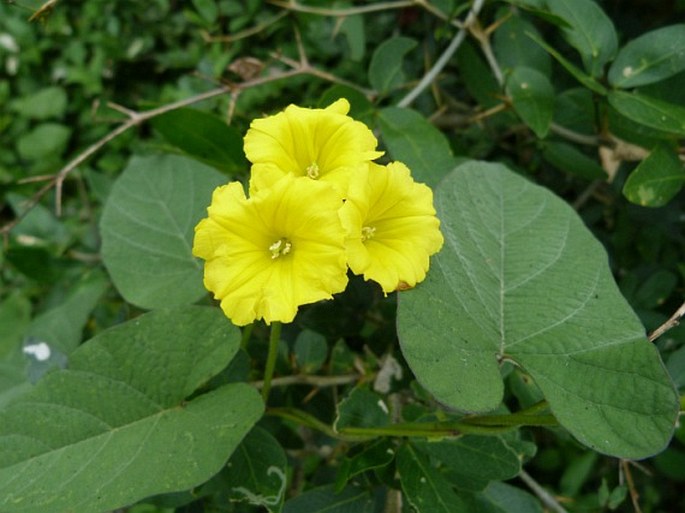
Distribution: It is a widespread plant of the humid tropics, occurring as two subspecies, M. u. subsp. umbellata in tropical America and western Africa, while subsp. orientalis is common from eastern Africa through southern and southeastern Asia to Australia.
Ecology: It grows in tropical forests, grasslands, pastures, along field edges, roadsides and watercourse, up to elevations of about 1100 m.
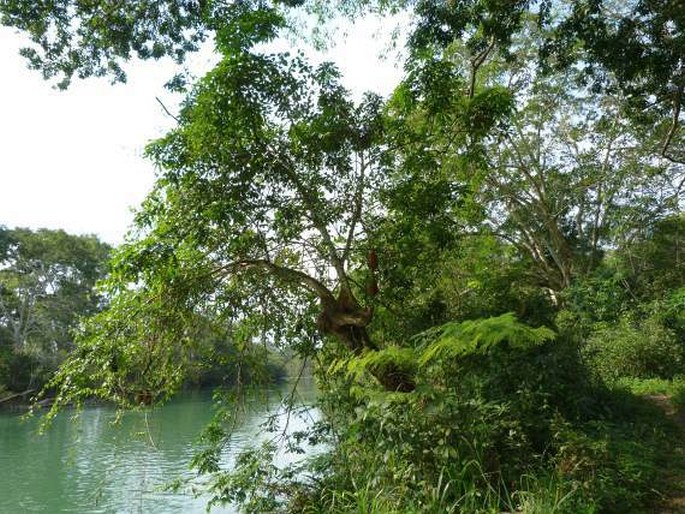
Description: Perennial vine with climbing or trailing stems up to 3 m or more in length, glabrous or softly hairy. Leaves alternate, petiolate, narrowly to broadly ovate, 10–15 cm long, base cordate, rarely hastate, margin entire, apex emarginate, acute to acuminate. Inflorescences umbelliform cymes, few to many flowered, on peduncle 1–5 cm long; calyx 5–8 mm long; corolla funnelform, 2–4 cm long, bright yellow (subsp. umbellata), white or orange (subsp. orientalis). Fruit is a capsule, ovoid to conical, 10–15 mm long.
Use: The pounded leaves may be used as a poultice for burns and scalds.
Note: The genus Merremia includes about 80 species, which occur in tropical regions of Africa, Asia, Australia, North and South America.
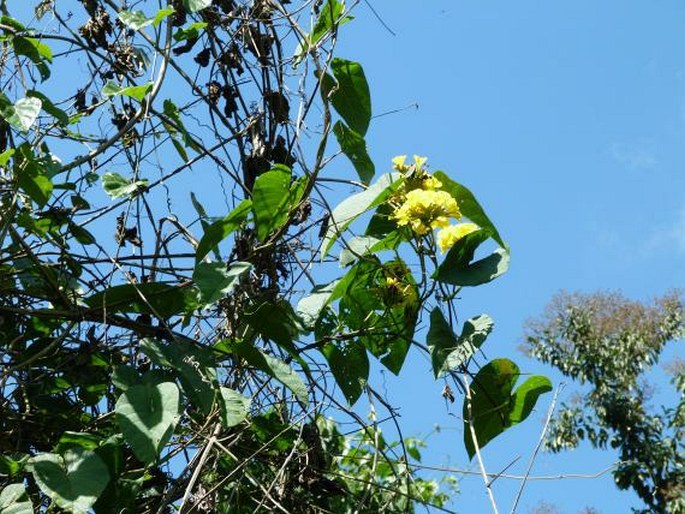
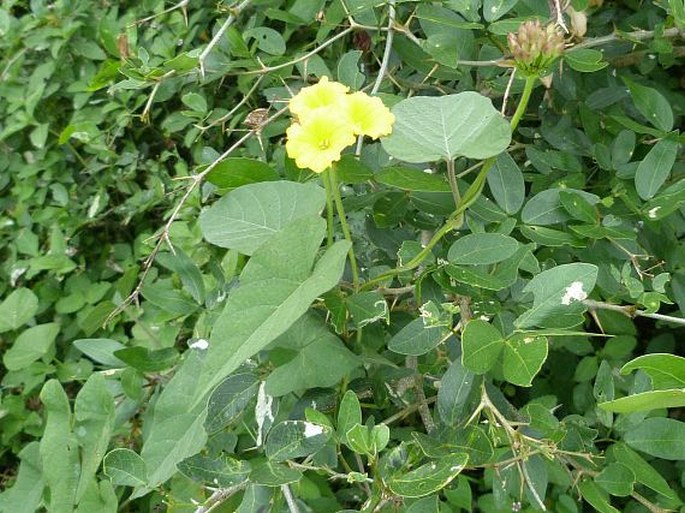
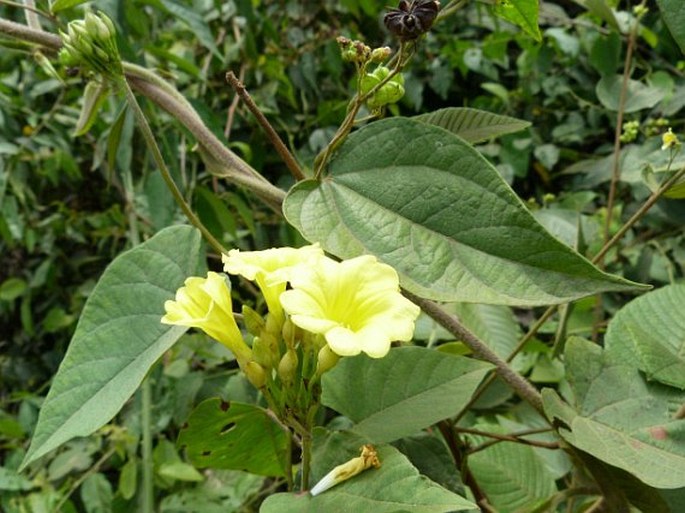
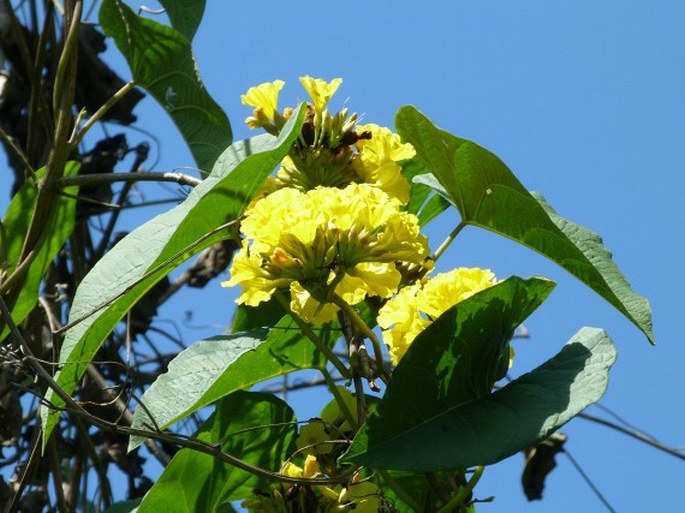
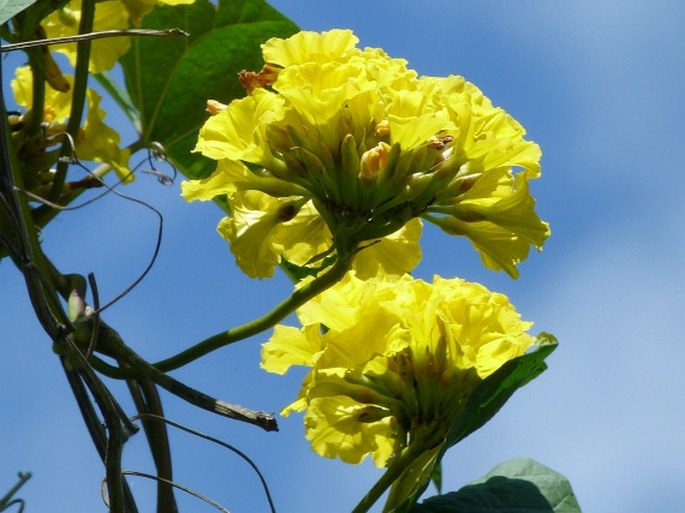
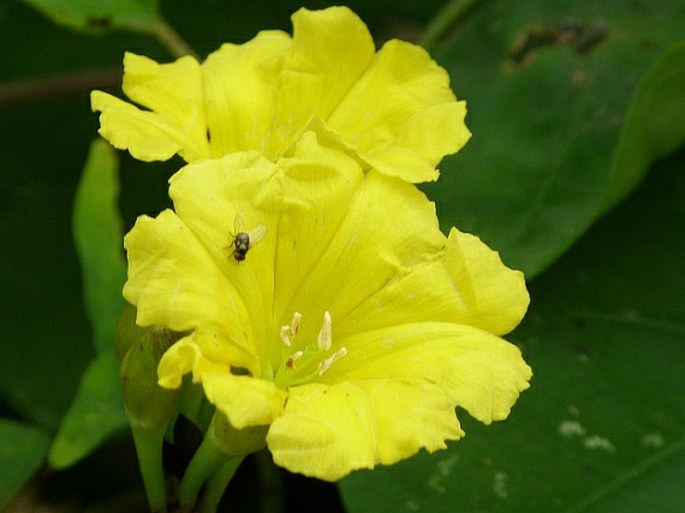
These images were taken in Costa Rica, Caño Negro (by Jindřiška Vančurová, February 21, 2014), in Belize, San Jose Succotz (by Jindřiška Vančurová, February 18, 2015), Belize, Orange Walk (February 20, 2015), and in Belize, Blue Hole (February 27, 2015).


